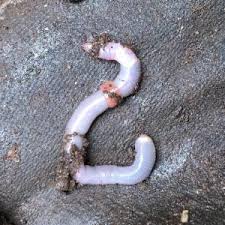Octolasion cyaneum: Difference between revisions
No edit summary |
|||
| Line 36: | Line 36: | ||
==Ecology== | ==Ecology== | ||
==Life Cycle== | ==Life Cycle== | ||
The common mode of reproduction is parthenogenesis that results in the production of genetically homogeneous clones in populations founded on one | The common mode of reproduction is parthenogenesis that results in the production of genetically homogeneous clones in populations founded on one or only few individuals [.]. They produce euther one hatching (singleton) or two hatchings (twins) per cocoon, which are rare but not impossible [.]. | ||
==References== | ==References== | ||
Revision as of 09:09, 29 April 2025
Octolasion cyaneum is in the family Lumbricidae that are the dominant earthworms of pastures and croplands of Europe, they are large sluggish species mostly found in the topsoil of low-fertility pastures on many soil types [.]. They originated in Europe and were brought to New Zealand through either ballast ships or imported plants by early European settlers [.].
 | |
| Kingdom: | Animalia |
|---|---|
| Phylum: | Annelida |
| Class: | Citellata |
| Order: | Crassiclitellata |
| Family: | Lumbricidae |
| Genus: | Octolasion |
| Species: | Octolasion cyaneum |
Range
O. cyaneum is a temperate endogenic species that is found throughout Europe, America, Australia, northern India, and Pakistan [.].
Ecology
Life Cycle
The common mode of reproduction is parthenogenesis that results in the production of genetically homogeneous clones in populations founded on one or only few individuals [.]. They produce euther one hatching (singleton) or two hatchings (twins) per cocoon, which are rare but not impossible [.].